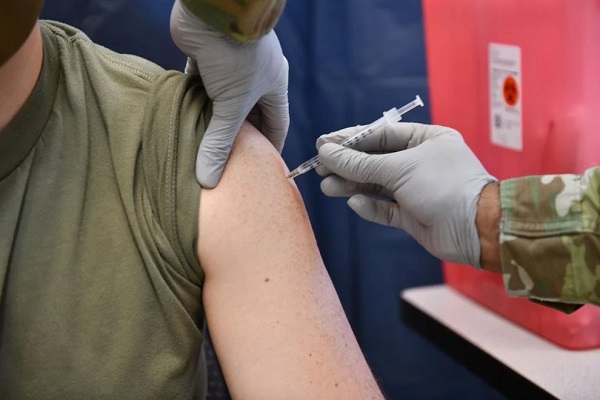Opinion
Downtown Revitalization is not “THE” issue for our new city council. There are other more pressing issues.

Downtown revitalization was a key issue in the 1980 Red Deer municipal election that saw Bob McGhee become our mayor.
Downtown revitalization was a key issue in the 1992 Red Deer municipal election that saw Gail Surkan become our mayor.
Downtown revitalization was a key issue in the 2004 Red Deer municipal election that saw Morris Flewwelling become our mayor.
Downtown revitalization was a key issue in the 2013 Red Deer municipal election that saw Tara Veer become our mayor.
Downtown revitalization was a key issue in the 2021 Red Deer municipal election that saw Ken Johnston become our mayor.
Downtown revitalization has always been “a” key issue in Red Deer but it is not “the” key issue in Red Deer.
There have been many ideas for revitalizing the downtown. From tax freezes, tax holidays, grants for store front restorations, pedestrian walkways, patios, one- way streets, free parking, river lands, pedestrian bridge, even a canal and they all cost money.
Parkland Mall use to be the powerhouse destination point for central Alberta and some of their taxes went to pay for many of the downtown revitalization incentives. Now the malls could use some help. Anyone?
I used to work out of an office downtown, but I still felt alienated from the downtown culture, and it all became clear in one incident. I was leaving a store on Ross Street and as I stepped out the door I was bowled over by a bicyclist. My pants were torn, my leg was cut but no one spoke to me, but the staff fussed over the bicyclist by name. I got up leaned the bicycle against the parking meter and left, amazed that nobody even asked if I was okay.
I remember a business owner saying that every time the city invests in the downtown my rent goes up. The landlords benefit the most. Another talked about how losing parking stalls hurt his business, another spoke of walk-in traffic increases theft more than sales.
Councilor Frank Wong retired from city council this year citing “Unresolvable issues” and I think that the downtown is one of them. Perhaps it is time to think bigger picture.
Capstone, for example, even after all these decades and the hundreds of millions spent moving the public yards, burying services, aligning roads and promoting this 23-acre futuristic miracle neighbourhood, won’t save the downtown for such simple reasons as most pedestrians won’t cross Taylor Drive.
We have spent decades developing 30 Avenue, shopping centres, plans for 5 high schools, 2 Aquatic Centres, Pickleball courts, new firehall, walkways and playgrounds so let us make 30 Avenue the new Ross Street.
We have new shopping destinations on Gaetz south and I see they are currently upgrading storefronts without taxpayers money, shouldn’t the landlords downtown pay for their updating.
So, after voting a dozen times municipally talking about downtown revitalization, perhaps it is time to rethink the way forward.
Perhaps there is more to Red Deer than downtown? Perhaps the powers that be could expand their circle of influence?
Remember there are other key subjects that need attention, stagnant population growth, no high school for the 30% population living north of the river, crumbling infrastructure in older neighbourhoods, gangs and homeless stealing in neighbourhoods, and the mere fact that Red Deer continues to have the poorest air quality in Alberta, and Alberta has the poorest air quality in Canada. The list goes on.
So perhaps the new council will look outwards too and address other issues, like they do on downtown revitalization, too.
Just saying.
Garfield Marks
Alberta
Alberta’s embrace of activity-based funding is great news for patients

 From the Montreal Economic Institute
From the Montreal Economic Institute
Alberta’s move to fund acute care services through activity-based funding follows best practices internationally, points out an MEI researcher following an announcement made by Premier Danielle Smith earlier today.
“For too long, the way hospitals were funded in Alberta incentivized treating fewer patients, contributing to our long wait times,” explains Krystle Wittevrongel, director of research at the MEI. “International experience has shown that, with the proper funding models in place, health systems become more efficient to the benefit of patients.”
Currently, Alberta’s hospitals are financed under a system called “global budgeting.” This involves allocating a pre-set amount of funding to pay for a specific number of services based on previous years’ budgets.
Under the government’s newly proposed funding system, hospitals receive a fixed payment for each treatment delivered.
An Economic Note published by the MEI last year showed that Quebec’s gradual adoption of activity-based funding led to higher productivity and lower costs in the province’s health system.
Notably, the province observed that the per-procedure cost of MRIs fell by four per cent as the number of procedures performed increased by 22 per cent.
In the radiology and oncology sector, it observed productivity increases of 26 per cent while procedure costs decreased by seven per cent.
“Being able to perform more surgeries, at lower costs, and within shorter timelines is exactly what Alberta’s patients need, and Premier Smith understands that,” continued Mrs. Wittevrongel. “Today’s announcement is a good first step, and we look forward to seeing a successful roll-out once appropriate funding levels per procedure are set.”
The governments expects to roll-out this new funding model for select procedures starting in 2026.
* * *
The MEI is an independent public policy think tank with offices in Montreal, Ottawa, and Calgary. Through its publications, media appearances, and advisory services to policymakers, the MEI stimulates public policy debate and reforms based on sound economics and entrepreneurship.
espionage
Hong Kong Detains Parents of Activist Frances Hui Amid $1M Bounty, Echoing Election Interference Fears in Canada

 Sam Cooper
Sam Cooper
In a deeply alarming escalation of transnational repression that echoes threats made against a Canadian election candidate, Hong Kong’s national security police today detained the parents of U.S. resident Frances Hui, a prominent Hong Kong democracy activist who previously testified before Canada’s Parliament about Chinese government harassment on Western soil.
Hui, who fled Hong Kong and was granted asylum in Washington, D.C., faces a HK$1 million bounty issued in December 2023 under Beijing’s sweeping National Security Law. She had warned Canadian lawmakers that the Chinese Communist Party was targeting overseas activists—including herself and others with Canadian ties—through intimidation, surveillance, and harassment campaigns executed by proxies abroad.
The detention in Hong Kong on Thursday, April 10, comes just one week after the U.S. State Department sanctioned six Hong Kong and Chinese officials and two days after a bill was reintroduced in Congress to shutter Hong Kong’s de facto embassies in the U.S. Hui’s advocacy played a major role in both moves.
Hui, the Advocacy and Policy Coordinator for the Committee for Freedom in Hong Kong (CFHK) Foundation, condemned the police action against her family as “emotional blackmail.”
“My parents and I have had no contact since I left Hong Kong in 2020,” Hui said in a statement. “The police arranged a crowd of media to photograph their exit from the police station—to humiliate them. This is a deliberate attempt to intimidate and silence me.”
The targeting of Hui’s family may intensify concerns in diaspora communities that the Chinese Communist Party is attempting to obtain multiple objectives, potentially sending a message timed to Canada’s 2025 federal election—especially after recent remarks from a former Liberal candidate in Markham–Unionville stoked widespread alarm.
Paul Chiang, who resigned last week amid an RCMP review into controversial remarks, had reportedly suggested that Conservative opponent Joe Tay—a Canadian citizen wanted under Hong Kong’s National Security Law—could be taken to the Chinese Consulate in Toronto to claim a bounty.
Chiang, a former Markham police officer who unseated longtime Conservative representative Bob Saroya to win Markham–Unionville for Team Trudeau in 2021, stepped down after the RCMP confirmed it was investigating his comments to Chinese-language media in January 2025.
On the latest threats to Hui and her family, CFHK Foundation President Mark Clifford said: “This is outrageous targeting of a young woman who has lived in the U.S. for the last five years and whose advocacy and freedom of speech is protected under U.S. laws. The CFHK Foundation will continue to support Frances and all those with the courage to speak out against the crimes being perpetrated in Hong Kong and the low-class bullies who perpetrate them.”
Earlier in Canada’s election campaign, which is quickly becoming marked by reports of Chinese interference, Tay, a former Hong Kong broadcaster whose independent journalism has drawn retaliation from Beijing, quickly rejected Chiang’s apology, calling it “the tradecraft of the Chinese Communist Party.” He added: “They are not just aimed at me; they are intended to send a chilling signal to the entire community to force compliance with Beijing’s political goals.”
As previously reported by The Bureau, Hui detailed her experience with transnational repression in testimony before Canada’s Subcommittee on International Human Rights. She recounted how she was targeted by a naturalized U.S. citizen—now under federal indictment in Massachusetts—who allegedly spied on dissidents for the Chinese government.
“Between 2018 and 2022, this individual spied on members and leaders of Boston-area Chinese family associations and community organizations, as well as anti-PRC dissidents,” Hui told the committee. “In one incident, he mobilized hundreds to harass us. I was followed home and had to call the police. I regularly receive phone calls from men speaking Chinese.”
Developing…
The Bureau is a reader-supported publication.
To receive new posts and support my work, consider becoming a free or paid subscriber.
Invite your friends and earn rewards
-

 2025 Federal Election15 hours ago
2025 Federal Election15 hours agoLiberals Replace Candidate Embroiled in Election Interference Scandal with Board Member of School Flagged in Canada’s Election Interference Inquiry
-

 Alberta14 hours ago
Alberta14 hours agoIs Canada’s Federation Fair?
-

 Alberta13 hours ago
Alberta13 hours agoProvince introducing “Patient-Focused Funding Model” to fund acute care in Alberta
-

 espionage16 hours ago
espionage16 hours agoU.S. Experts Warn Canada Is Losing the Fight Against PRC Criminal Networks—Washington Has Run Out of Patience
-

 Alberta9 hours ago
Alberta9 hours agoMedical regulator stops short of revoking license of Alberta doctor skeptic of COVID vaccine
-

 Automotive17 hours ago
Automotive17 hours agoTesla Vandals Keep Running Into The Same Problem … Cameras
-

 International10 hours ago
International10 hours agoUN committee urges Canada to repeal euthanasia for non-terminally ill patients
-

 COVID-193 hours ago
COVID-193 hours agoMassive new study links COVID jabs to higher risk of myocarditis, stroke, artery disease


